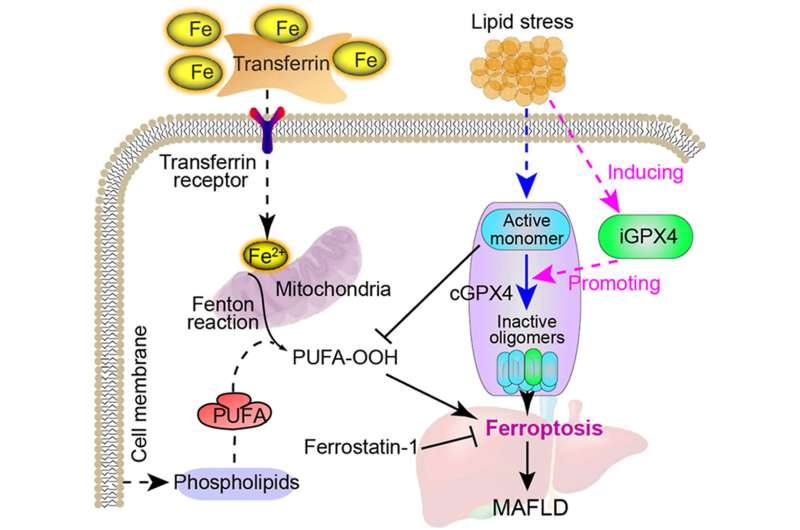Targeting a novel inducible isoform to treat metabolic-associated fatty liver disease

Metabolic-associated fatty liver disease (MAFLD), which was previously known as non-alcoholic fatty liver disease (NAFLD), represents a major health concern worldwide with limited therapy. The authors of an article, recently published in Acta Pharmaceutica Sinica B, provide evidence that ferroptosis, a novel form of regulated cell death characterized by iron-driven lipid peroxidation, was comprehensively activated in liver tissues from MAFLD patients. The canonical-GPX4 (cGPX4), which is the most important negative controller of ferroptosis, is downregulated at the protein but not mRNA level.
Interestingly, a non-canonical GPX4 transcript-variant is induced (inducible-GPX4, iGPX4) in the MAFLD condition. The high fat-fructose/sucrose diet (HFFD) and methionine/choline-deficient diet (MCD)-induced MAFLD pathologies, including hepatocellular ballooning, steatohepatitis and fibrosis, were attenuated and aggravated, respectively, in cGPX4-and iGPX4-knockin mice.
cGPX4 and iGPX4 isoforms also displayed opposing effects on oxidative stress and ferroptosis in hepatocytes. Knockdown of iGPX4 by siRNA alleviated lipid stress, ferroptosis and cell injury. Mechanistically, the triggered iGPX4 interacts with cGPX4 to facilitate the transformation of cGPX4 from enzymatic-active monomer to enzymatic-inactive oligomers upon lipid stress, and thus promotes ferroptosis. Co-immunoprecipitation and nano LC–MS/MS analyses confirmed the interaction between iGPX4 and cGPX4.
These results reveal a detrimental role of non-canonical GPX4 isoform in ferroptosis, and indicate selectively targeting iGPX4 may be a promising therapeutic strategy for MAFLD.
More information: Jie Tong et al, Targeting a novel inducible GPX4 alternative isoform to alleviate ferroptosis and treat metabolic-associated fatty liver disease, Acta Pharmaceutica Sinica B (2022). DOI: 10.1016/j.apsb.2022.02.003
Provided by Compuscript Ltd




















